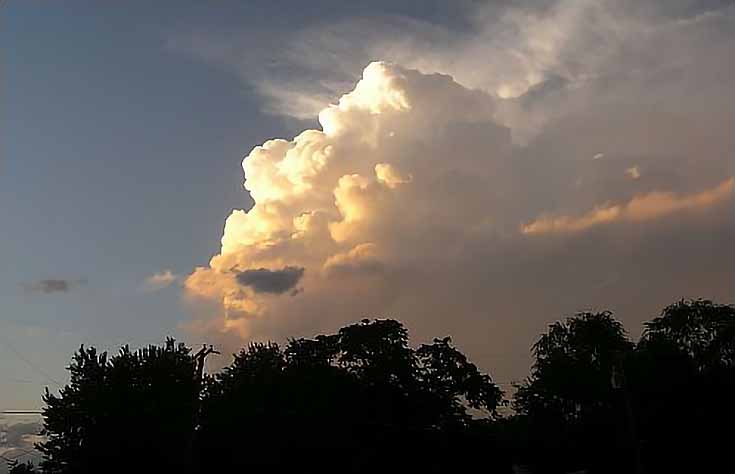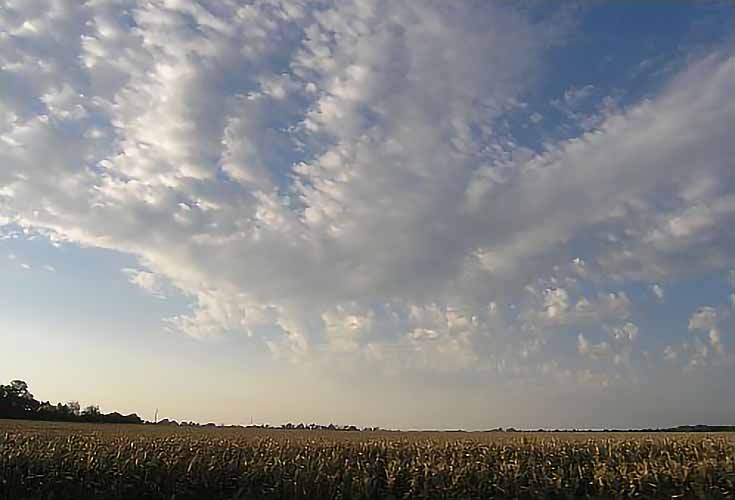I’ve always loved drawing realistic clouds floating above my landscapes, but lately my interest in “cloud portraits” has grown to the point where I’d rather just draw clouds. . . by themselves! (Read The Adventure of the Artist’s Life to learn more about what brought on that change.)
Of course, I’ve been photographing clouds for years, too—and my long-term observations and experiences have revealed a few things that all clouds have in common.
So today I’d like to share a few tips about clouds that will hopefully help you in your next drawing:
1. Clouds have character
The first thing to remember when it comes to drawing clouds is that they’re constantly changing. They’re almost like a living thing that breathes and moves, especially if you’re drawing from life.
But even if you’re drawing from a reference photo, it’s important that you not stress over getting every detail 100% accurate. Unless your goal is hyper-realism, you don’t have to draw every detail.
Instead, it’s best to make your goal capturing the “character” of the cloud.
What do I mean by that? Some clouds are massive and impressive. They tower into the sky and are filled with light and shadow. Some even look threatening.
These clouds may be bright enough to cast reflected light over the landscape. Their edges are clearly defined (even if they’re constantly changing) with distinct shapes inside the main body of the cloud.
In other words, they demand attention.
Other clouds are thin and wispy. They’re more like feathers drifting on the wind. There are no hard edges—or very few—in these clouds. They seem instead to fade in and out of existence.
Some clouds are so thin and undefined you don’t really see them as individual clouds. They’re more like a high, thin fog. No edges at all, and very little variation in light or shadow.
Still other clouds are a combination of types. They’re a cross between massive and wispy. They’re what’s known as cumulus clouds, and they generally have rounded tops and flat bottoms.
The bottom line is that clouds come in all forms and combinations. Many times, you can see more than one type in the sky at the same time. And all of those possible combinations make it doubly important to really look at the clouds you’re drawing and to draw what you see.
I guess my first tip could be summed up like this: if you want to draw realistic clouds, stay away from basic, generic “cloud” shapes that look like cotton balls. They never actually look like that in real life!
2. Every cloud has mass
When I speak of cloud mass, I’m referring to the amount of light the cloud obscures. Thin, wispy clouds are so thin, they let a lot of light through, so there aren’t many shadows on them. Nor do they cast many shadows on nearby clouds.
Thunderheads, on the other hand, are so full of moisture that they stop a lot of light. That makes for dramatic light and shadow patterns within the cloud.
They can also cast shadows on nearby clouds, or against the clear sky. Not only that, but they also catch and reflect a lot of color!
Just stop and take a good look at an evening thunderhead the next time you get the opportunity. Every color in the evening sky will be showcased in that cloud.
3. As you draw, start general and work towards detail
No matter what type of cloud you want to draw, start with general shapes and work toward details. When it comes time to shade, start with light, basic values and gradually refine the values.
Develop your color layer by layer, too (this is specially important if you’re working in colored pencils.)
4. Take your time
This is THE most important tip I can share.
I realize if you’re drawing from life, you will have to sketch quickly to establish the shapes. But once those are in place, take your time observing the values and colors in the clouds, and do your best to duplicate them on paper or canvas.
(I recommend How to Draw Perfect, Luminous Clouds with Graphite Pencils if you’d like a more step-by-step tutorial on creating those shapes and fleshing out the details.)
In the end, learning how to draw clouds is a challenging, but satisfying process. You’ll always have an endless variety of subjects, even with the same cloud, since they change so quickly.
Drawing clouds is also an excellent way to improve your powers of observation, and your ability to sketch and draw quickly.
It may be a daunting thing to look up into the sky, choose a cloud—even just one cloud—and try to capture it on paper or canvas. But it CAN be done, and hopefully these simple tips will help!
This post may contain affiliate links.



